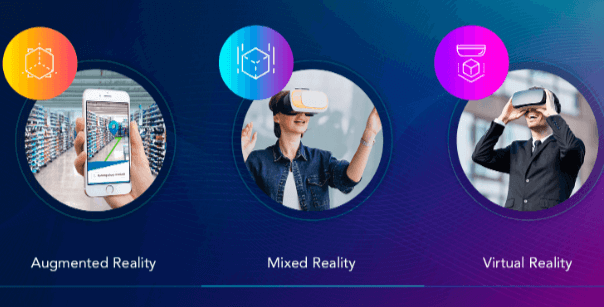How is augmented reality (AR) changing the retail and marketing landscape?

Introduction
Augmented reality (AR) is revolutionizing the retail and marketing landscape. By blending digital elements with the physical world, AR is creating immersive and interactive experiences that captivate consumers and redefine traditional shopping and marketing strategies. This article explores the various ways AR is changing the retail and marketing sectors, from enhancing customer engagement to optimizing operations.
The Rise of Augmented Reality in Retail
Augmented reality has gained significant traction in the retail industry. Retailers are leveraging AR to bridge the gap between online and in-store shopping, providing consumers with unique and engaging experiences that enhance their purchasing decisions.
Enhancing Customer Experience with AR
AR offers retailers the ability to create personalized and immersive shopping experiences. Customers can visualize products in their real-world environment, try on virtual clothes, and interact with products in ways that were previously impossible.
Virtual Try-Ons: Revolutionizing Fashion Retail
One of the most notable applications of AR in retail is virtual try-ons. Customers can use their smartphones or AR mirrors to see how clothes, accessories, or makeup look on them without physically trying them on. This not only enhances convenience but also reduces return rates.
AR in Home Decor and Furniture Shopping
AR is transforming the home decor and furniture shopping experience by allowing customers to visualize how products will look in their homes. Apps like IKEA Place enable users to place virtual furniture in their rooms to see how it fits and matches with their existing decor.
Interactive and Immersive Product Displays
Retailers are using AR to create interactive and immersive product displays. By scanning a product with their smartphones, customers can access detailed information, 3D models, and even videos that enhance their understanding and interest in the product.
Personalized Marketing Campaigns
AR enables brands to create personalized marketing campaigns that resonate with individual consumers. By using AR to deliver customized content and experiences, brands can build stronger connections with their audience.
Location-Based AR Marketing
Location-based AR marketing allows brands to target consumers based on their geographical location. Retailers can create AR experiences that are triggered by a consumer’s proximity to a store or a specific location, driving foot traffic and engagement.
Gamification of Shopping
AR introduces gamification elements into the shopping experience, making it more engaging and fun. Retailers can create AR-based games and challenges that incentivize customers to interact with their products and stores.
AR-Powered Loyalty Programs
Loyalty programs are being enhanced with AR to create more engaging and rewarding experiences. Customers can collect virtual rewards, participate in AR treasure hunts, and unlock exclusive content, increasing their loyalty and engagement with the brand.
Streamlining Operations with AR
Beyond enhancing customer experiences, AR is also streamlining retail operations. From inventory management to staff training, AR is optimizing various aspects of retail operations, making them more efficient and effective.
AR in Inventory Management
AR is improving inventory management by providing real-time data and visualizations. Retailers can use AR to track inventory levels, locate products in warehouses, and optimize storage layouts, reducing costs and improving efficiency.
Training and Development with AR
AR is being used to train retail staff more effectively. Interactive AR training programs provide hands-on experience and practical knowledge, helping employees to better understand products and improve their customer service skills.
The Impact of AR on Marketing Strategies
AR is reshaping marketing strategies by providing new ways to engage consumers and deliver content. Marketers are using AR to create memorable and shareable experiences that boost brand awareness and drive sales.
AR Advertising Campaigns
AR advertising campaigns are more interactive and engaging than traditional ads. By incorporating AR elements, brands can create ads that captivate consumers and encourage them to interact with the content, leading to higher engagement rates.
Social Media and AR Integration
Social media platforms are integrating AR features to enhance user engagement. Brands can create AR filters and effects that users can apply to their photos and videos, increasing brand visibility and reach.
Measuring AR Marketing Effectiveness
Marketers are using advanced analytics to measure the effectiveness of AR campaigns. By tracking user interactions and engagement, brands can gain valuable insights into consumer behavior and preferences, allowing them to refine their strategies.
Challenges and Limitations of AR in Retail and Marketing
While AR offers numerous benefits, it also presents challenges and limitations. High development costs, technical issues, and user adoption are some of the hurdles that retailers and marketers must overcome to fully leverage AR.
Overcoming Technical Challenges
Developing and implementing AR experiences can be technically challenging. Retailers and marketers need to invest in robust AR platforms and ensure compatibility with various devices to provide seamless experiences.
Addressing User Adoption
User adoption is a critical factor in the success of AR initiatives. Educating consumers about the benefits of AR and providing user-friendly experiences are essential to encourage widespread adoption.
The Future of AR in Retail and Marketing
The future of AR in retail and marketing is promising. As technology continues to evolve, AR will become more accessible and sophisticated, offering even more innovative ways to engage consumers and optimize operations. This trend is also making significant waves in Real Estate Technology, where AR is revolutionizing property showcasing and client interactions.
Emerging Trends in AR Technology
Emerging trends in AR technology, such as advancements in hardware, software, and AI integration, will drive the next wave of innovation in the retail and marketing sectors.
Predictions for AR in Retail
Experts predict that AR will become a standard feature in retail, with more retailers adopting AR to enhance their customer experiences and streamline operations. The integration of AR with other technologies, such as AI and IoT, will further transform the retail landscape.
The Role of AI in AR Development
AI is playing a crucial role in the development of AR technologies. By integrating AI, AR experiences can become more intelligent and personalized, providing even greater value to consumers and businesses.
Preparing for an AR-Driven Future
Retailers and marketers need to prepare for an AR-driven future by investing in AR technology, developing innovative AR experiences, and staying ahead of emerging trends. Building expertise in AR and understanding its potential impact will be key to thriving in this evolving landscape.
Conclusion
Augmented reality is transforming the retail and marketing landscape, offering unprecedented opportunities for enhancing customer experiences, optimizing operations, and driving innovation. By embracing AR, retailers and marketers can create more engaging, personalized, and immersive experiences that resonate with consumers and drive business growth. The future of AR in retail and marketing is bright, and those who invest in and adapt to this technology will be well-positioned to succeed in the ever-evolving market.
FAQs
How does augmented reality improve customer engagement?
Augmented reality improves customer engagement by providing interactive and immersive experiences that capture consumers’ attention and allow them to interact with products in new ways.
What are some examples of AR applications in retail?
Examples of AR applications in retail include virtual try-ons for clothing and accessories, AR-based home decor visualizations, interactive product displays, and AR-powered loyalty programs.
How can AR enhance marketing campaigns?
AR enhances marketing campaigns by creating memorable and interactive experiences, enabling personalized content delivery, and integrating with social media platforms to increase brand visibility and engagement.
What challenges do retailers face when implementing AR?
Retailers face challenges such as high development costs, technical issues, and user adoption when implementing AR. Overcoming these challenges requires investing in robust AR platforms and educating consumers about the benefits of AR.
How is AR used in inventory management?
AR is used in inventory management to provide real-time data and visualizations, helping retailers track inventory levels, locate products, and optimize storage layouts for improved efficiency.
What is the future outlook for AR in retail and marketing?
The future outlook for AR in retail and marketing is promising, with continued advancements in technology making AR more accessible and sophisticated. Retailers and marketers are expected to increasingly adopt AR to enhance customer experiences and streamline operations.



